Contemporary artist Jihyun Hwang visualisese the psychological conflicts and responses found within different relationships that we have with each other.
I am fully aware of my propensity to draw energy temporarily from odd and unusual moments, my works can also be seen as an account of observation of them.
Featured image: Singing Night (02). Gouache, Acrylic on canvas. 50 x 72.7 cm. 2019.
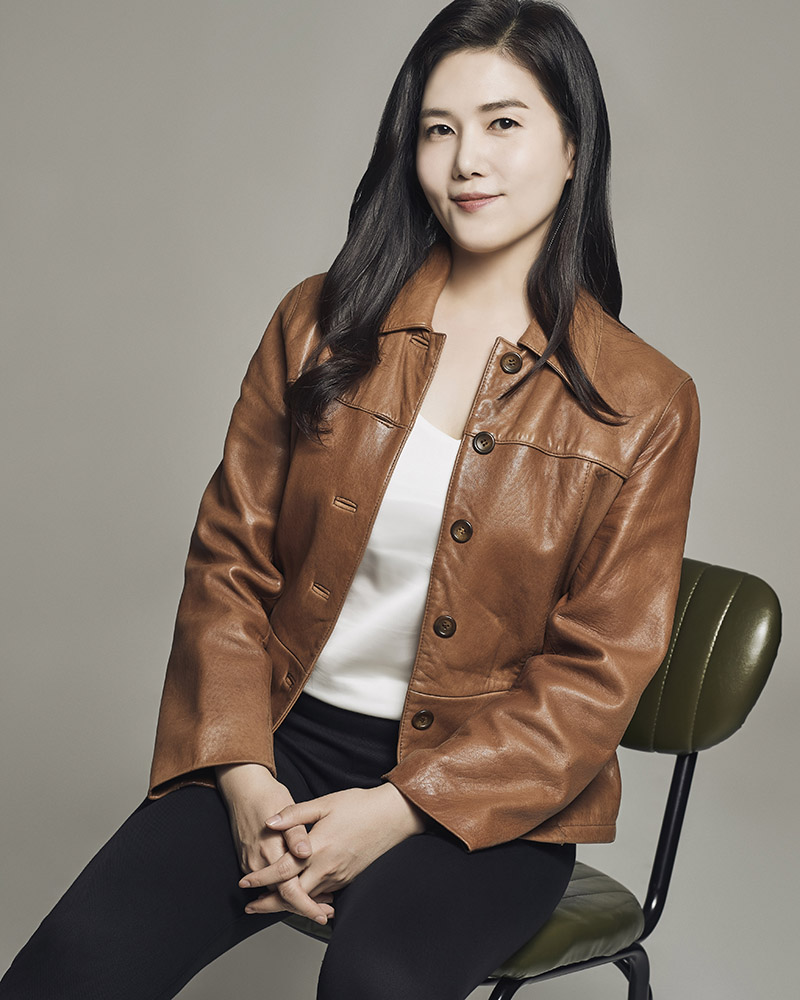
Artist portrait courtesy Jihyun Hwang.
I try to capture the everyday moments that so easily slip through us unnoticed.
How do you describe yourself in the context of challenging people’s perspectives via your work and art?
Human psychology and the inner self are what interests me. My work is mostly centred around visualising the psychological conflicts and responses that we see within different types of relationships we have with each other, objects, sceneries and so on. I also try to capture the everyday moments that so easily slip through us unnoticed.
How do you deal with the conceptual difficulty and uncertainty of creating new work?
Such uncertainty is what fascinates me. When faced with pressure or fear, I do try to relax and loosen up – both physically and mentally – but, at the same time, I’m not someone to wait in hesitation for the right moment to come. After all, you must start somewhere to get anywhere.
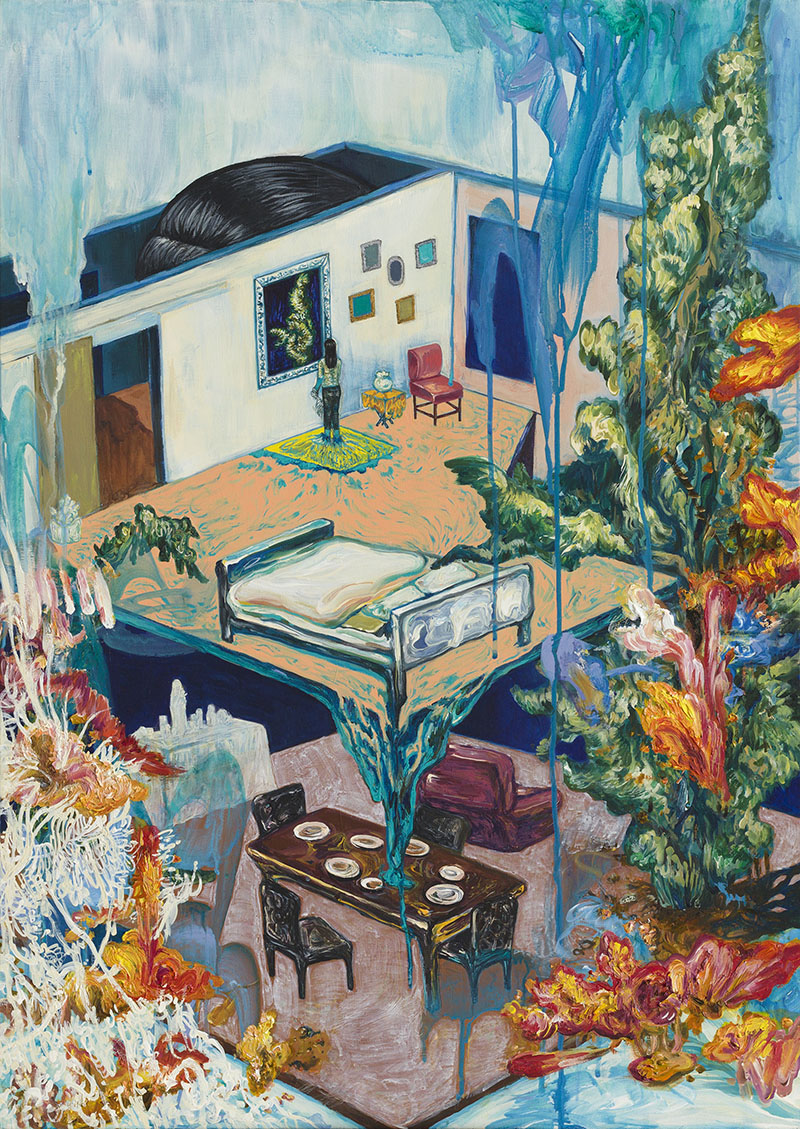
Encounter. Gouache, Acrylic and Oil on canvas. 90.9 x 65.1 cm. 2019.
Tell us about the evolution of your practice over the years. What would you call your style?
Before, I was more prone to take my ideas straight to the canvas. However, I gradually came to adopt more detailed and delicate practices beforehand, such as gathering references and conducting interviews.
I would say that my works have in common a characteristic combination of bountiful colours and altered shapes, which is my reaction to a rather boring and dry reality. And since I am fully aware of my propensity to draw energy temporarily from odd and unusual moments, my works can also be seen as an account of observation of them.
Morning breeze, scent of flora, sounds of ocean waves and raindrops all provide me with the perfect stimulation.
What inspires you? Let’s talk about your frameworks, references and process.
In principle, inspiration is everywhere; however, I find it mostly in nature. Morning breeze, scent of flora, sounds of ocean waves and raindrops all provide me with the perfect stimulation.
As for my work process, I use both my memory and cameras to capture ‘unusual or impressive’ moments I witness in daily life, wherein I find materials for my future work. Unlike photographs, which never changes, memories, by nature, are fluid and prone to change over the course, which makes it all the more interesting to experiment with combining the two in many different ways. And because I mainly work with painting, this can all be seen as constructing a ‘psychological space’.
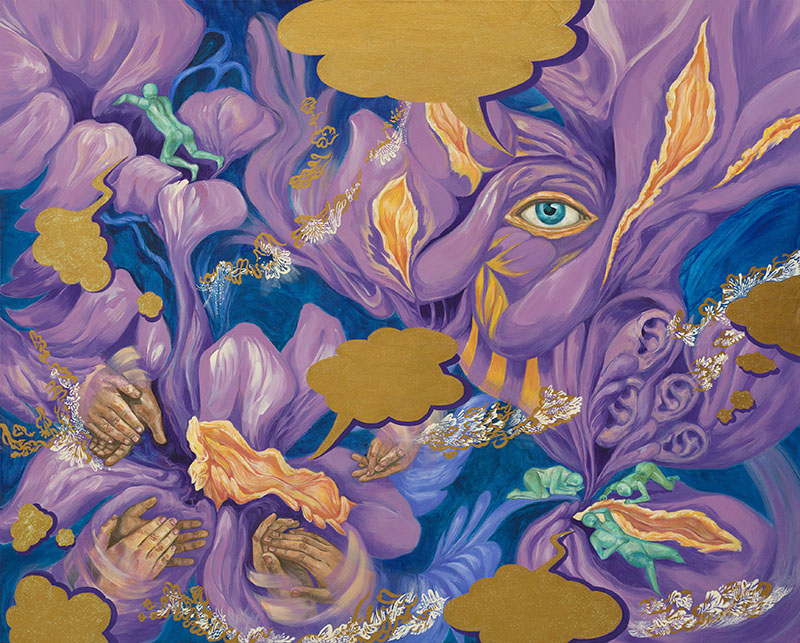
Singing Night (03). Gouache, Acrylic on canvas. 130 x 160 cm. 2019.
My biggest learning over the years is creating habits through repetition. In order to actually realise something, you must first endure the almost dull process of being lost in repetition.
What were the biggest learnings and hiccups in your artistic journey?
My biggest learning over the years is creating habits through repetition. I’ve personally experienced that 3 months of repetition can actually rewire the brain and the body, no matter what it may be. This is true for making art as well – planning out and executing a work all require certain amounts of time. It is my belief that laziness and inertia can never produce good art. Many of the artists around me are very devoted to their practice, displaying a sense of persistence. While I agree that art comes in many different forms, I also believe that in order to actually realise something, you must first endure the almost dull process of being lost in repetition.
That said, I don’t really recall experiencing any hiccups. Everything I did in the past happened for a reason, and I respect that; even when, looking back, it seems like a misstep.
How does your audience interact and react to the work you put out into the world?
Basically, after completing a work, interactions with the audience take place on many levels across various fields: from exhibition and artist talks to social media. I am typically unafraid to face and interact with an unspecified audience.
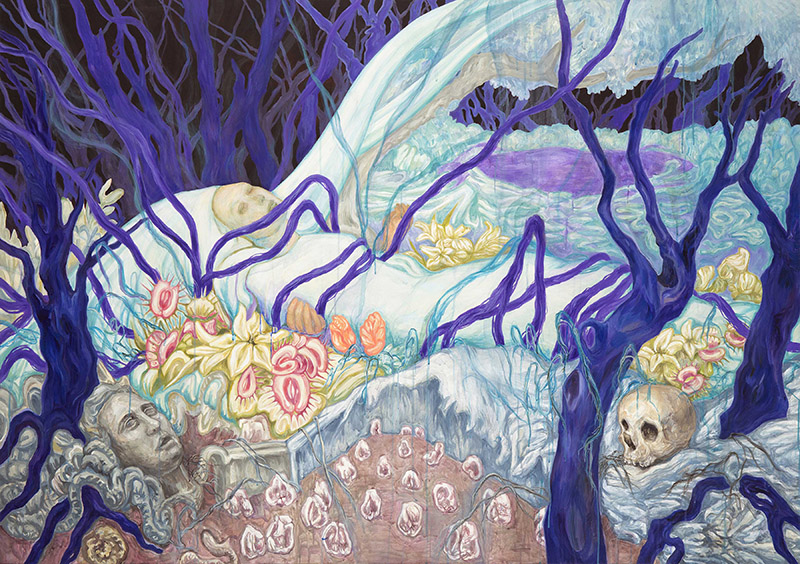
From Here to Somewhere. Gouache, Acrylic on canvas. 200 x 140 cm. 2017.
What are you working on? How are you balancing life and work at home during the lockdown?
I recently won a grand prize in an art contest held by a local gallery, which includes a solo invitational exhibition opportunity. So I am currently working on my solo exhibition, <Where is my Shelter?>, that will take place in August. The exhibition, which aims to take an in-depth look at individuals’ desires, is to be based on a series of interviews with the young generation who belong in their 20s-40s. Unfortunately, due to coronavirus, I’ve been conducting non face-to-face (written and telephone) interviews instead to collect necessary material.
Though the coronavirus situation here in Korea hasn’t completely stabilised, the government hasn’t yet implemented a total lockdown. People are allowed to leave their homes with face masks on, so I’m not experiencing much of an interruption in carrying on with my work. Also, since most gyms are closed during this period, I’ve been doing a lot of at-home workout routines and made it my daily habit to stay healthy.
I see an urgent need to address the question of how to achieve and maintain true solidarity between today’s artists.
What is there a crying need for in the art world today?
Personally, I see an urgent need to address the question of how to achieve and maintain true solidarity between today’s artists. There are still those who form cliques, divide classes and block out others when developing exhibitions and selecting artists. I would also like to see more diversification in curatorial practices. At biennales, it is too often that I come across works that put too much emphasis on size at the expense of subtlety and detail. I hope to see – and continue to pursue myself – more diverse styles and types of art which experiment, raise delicate questions and make statements.
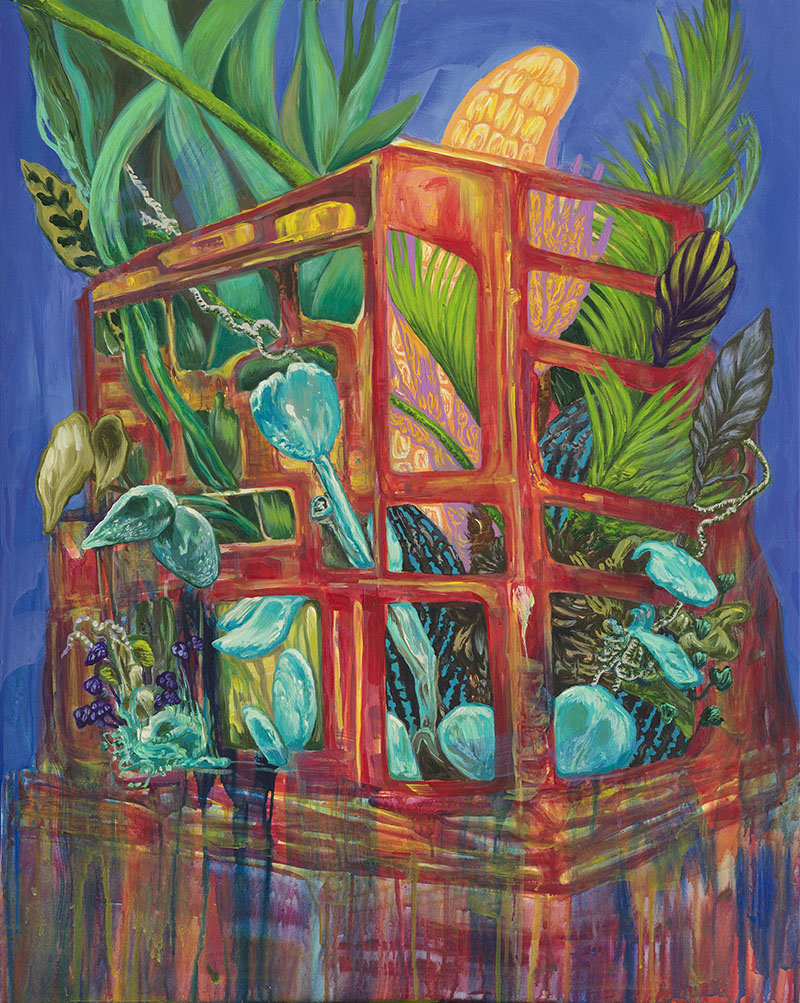
The Words that came out. Gouache, Acrylic on canvas. 90.9 x 72.7 cm. 2019.
What would elevate artists’ life during this period?
Creating an environment that allows and supports artists to concentrate on art in a sustainable way would be most beneficial. Running online exhibitions and virtual tours – as many have already jumped into – of course helps, but I must say that implementing an artist support system that lays out the foundation for artists to continue making art by offering direct and substantial backing, such as financial aid for buying art supplies, is what matters the most.
What do you look for while viewing art? Which shows, performances and experiences have shaped your own creative process? Who are your maestros? Whose journey would you want to read about?
To properly understand contemporary art, you must first equip yourself with the necessary knowledge. In other words, it needs to be studied to be appreciated. Approach based merely on one’s feeling or impression is at best rudimentary. However, at the same time, I also understand that this is in fact how most members of the audience, who aren’t artists themselves, begin their journey in art appreciation, and by delving deeper into artworks and artists, they would soon grow to enjoy art with a better understanding.

Studio view.
Contradiction between commercial and creative motivations is something many artists experience, but I wouldn’t say that you have to side with just one – good work generates its own customers.
How do you strike a balance between the contradicting motivations; commercial v/s creative? How does your interaction with a curator, gallery or client evolve from the initial interface to the working-involvement-relationship?
Contradiction between commercial and creative motivations is something many artists experience, but I wouldn’t say that you have to side with just one – good work generates its own customers. As for me, I not only create and exhibit my works, but I also sell my art. I’ve worked on art collaboration projects involving products such as perfumes and bags, so audiences have the option to purchase those items in addition to my original work. The way I see it, in the end, steady sales of art is what offers a higher chance for artists to stay focused on art. Fortunately, in my case, interacting with various parties—curators, gallerists, clients, etc.—on site has in many ways developed into fruitful relationships work-wise. Like others, artists shouldn’t shy away from going out there and showing their work or themselves.
What was your first sale? Do you handle the commercials yourself or is it outsourced to a gallery/agent
I made my first sale – multiple sales in fact – back in 2006 during my MFA solo exhibition; it helped me purchase supplies and set up my studio. Currently, I handle the commercials myself, but I’m also open to working gallery-exclusive as long as it proves to be beneficial for both parties.

Worship. Gouache, Acrylic on canvas. 130 x 162 cm. 2017.
Tell us about your studio, what kind of place is it? Could you describe your usual work-day in the studio?
I’ve been using this space for 10 years. There were initially four members when the studio started a decade ago (we each contributed to come up with deposit money). Since then, many have come and left, and now there are only two, which means we get to have more space for ourselves.
A typical week for me includes 2-3 days of teaching classes at college or individual sessions, and the rest I spend exclusively working on my own projects. I do yoga in the morning, work during the day until night, and then go home. It’s as simple as that.
On another note, I wish to actively participate in international artist-in-residence programs in the future to to live and work outside of my usual environment.
Are you more of a studio artist or naturally collaborative by nature? How do you feel about commissions?
I prefer to not work alone. It’s better for me to share a workspace with others; I think one other person besides me is just right. A little bit of noise or music playing in the background improves my attention. Moreover, as I’m a sociable character, small interactions in between work provide me with good distractions that I find refreshing.
As for commissions, I am open to offers, given that the terms and conditions are acceptable and as long as I can work them around my schedule.

Singing Night (02). Gouache, Acrylic on canvas. 50 x 72.7 cm. 2019.
How many works do you make in a year? How many would you like to be making?
It depends on the size and the material, but, basically, productivity is something I always aim for. Normally, in any given year, I make around 25 to 30 works.
Is there any topic you would like to be mentored on?
For the moment, I can’t think of any. It is because I’ve been asking myself about the meaning of ‘life as an artist’ over and over for the past 20 years, practicing and applying what I’ve picked up along the way. There are no predetermined answers to life; all we can hope for is to find whatever reasonable ways and means that best serve our respective lives.
Before you go – you might like to browse our Artist Interviews. Interviews of artists and outliers on how to be an artist. Contemporary artists on the source of their creative inspiration.








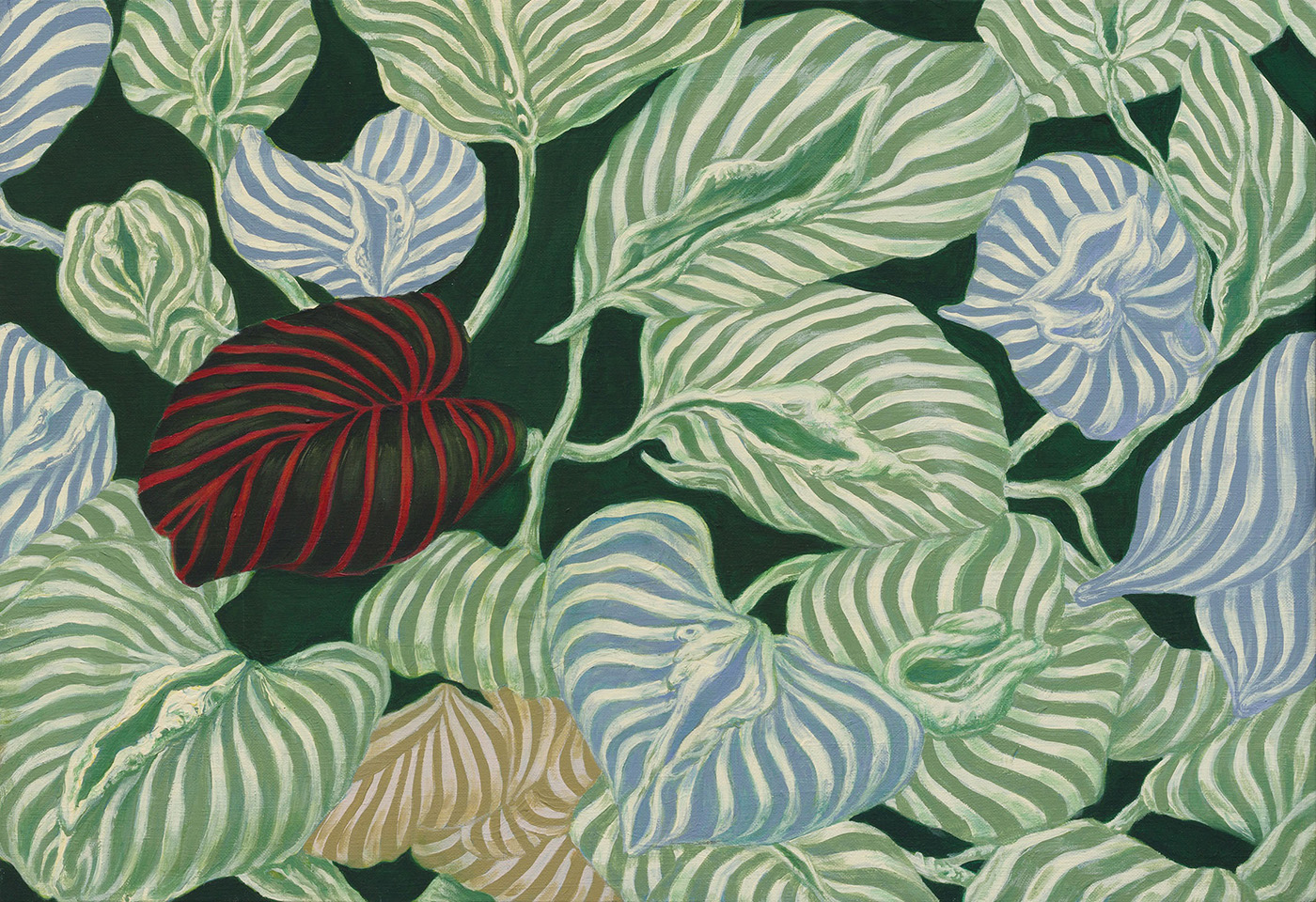



Add Comment